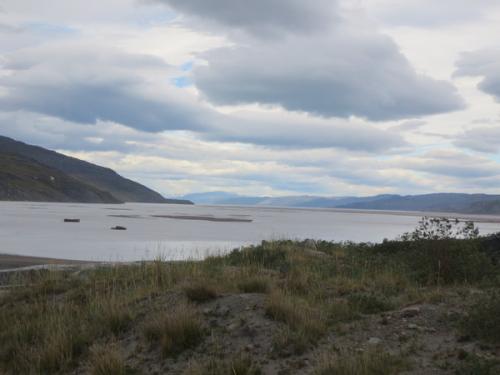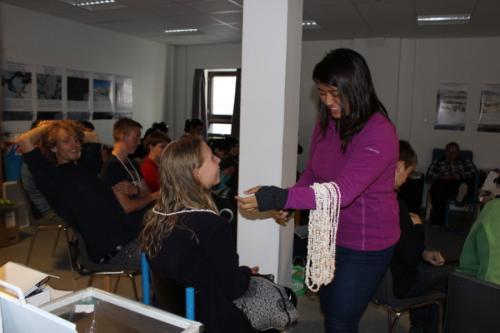
This morning a few students woke up early to go for a run to see Lake Ferguson, while others decided to sleep as much as possible. The entire group got ready for the day and ate breakfast at 7:00 am. After breakfast, we gathered for an introduction to the Kangerlussuaq Field School. We started off by learning each other’s names through a game. Then Kasper outlined what we will be doing over the next weeks. He introduced us to our groups containing 3-4 students each: Tuttu (Reindeer), Ukaleq (Arctic hare), Umimmak (Muskox), Nanoq (Polar bear), Puisi (Seal). To get comfortable with a GPSA Global Positioning System (GPS) is a satellite-based navigation system used to track the location or position of objects on the Earth’s surface. system, the groups split up, found special locations around Kangerlussuaq, and recorded the coordinates of the locations. Then each group, in a scavenger hunt, tried to find the locations of the other groups.

Each day of the week, a specific group will create a video clip discussing a topic, place, or scientist that we visit. To help us prepare for the video making, we watched some of the old videos that students made in previous years. We also learned about some equipment including video microscopes and river measurement tools.
Next we received eight Petri dishes that we would use to find out if there is any mold or bacteria in and around the building. Students placed half of the dishes outside and the other half inside in places where they thought these organisms might grow. They documented the areas, waited an hour, collected the petri dishes, and stowed them. In a few days we will meet with scientist Aviaja Lyberth Hauptmann from the Danish Technical University to analyze the dishes.
The students of JSEP come from many different and exotic parts of the world – a lot come from Greenland, but we also have participants from Hawaii, Denmark and Chile. To get to know each other, we prepared and shared small presentations about ourselves and our countries and brought tokens that represented our homes. The tokens ranged from maple sugar candy from Vermont to Danish cinnamon snails to Hawaiian leis.

Words of the Day
English/Danish/Greenlandic/Spanish
Reindeer (Caribou)/Rensdyr/Tuttu/Caribú (Reno)
Harp Seal/Grønlands sœlen/Puisi/Foca Arpa
Muskox/Moskusokse/Umimmak/Buey almizclero
Arctic hare/Snehare/Ukaleq/Liebre ártica
Polar bear/Isbjørn/Nanoq/Oso polar


Comments